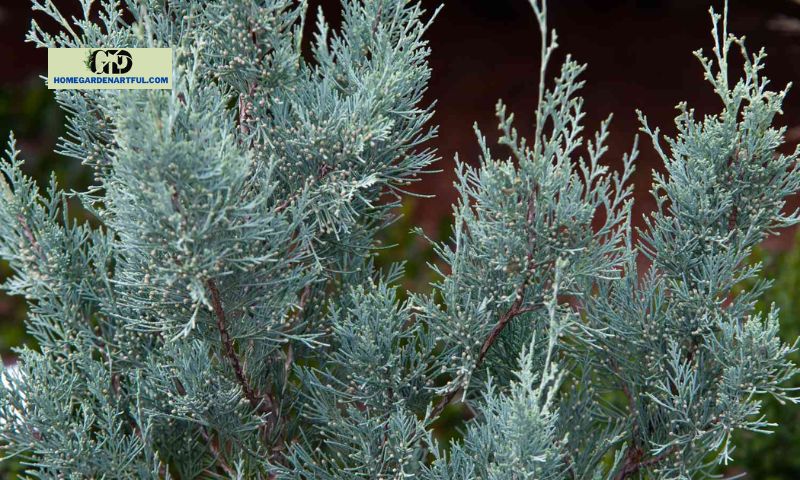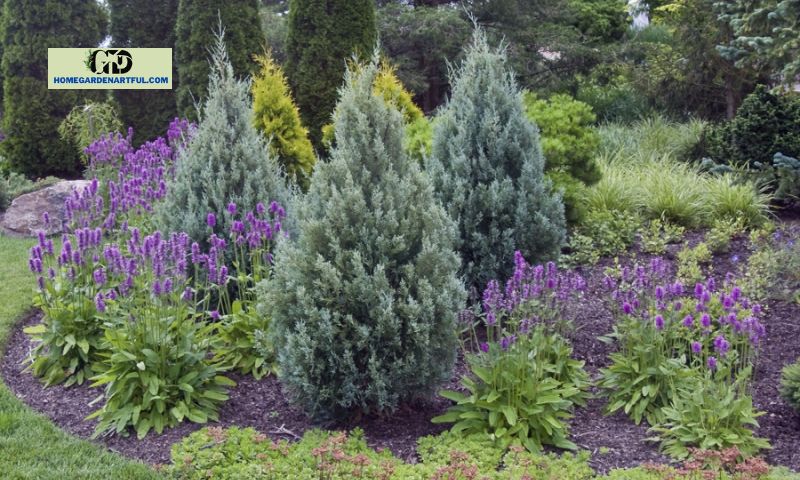The Wichita Blue Juniper, Juniperus scopulorum ‘Wichita Blue’ in scientific jargon, is a revered coniferous shrub praised for its gorgeous, brilliant hues and carefree growing tendencies. With its erect structure and silvery-blue needles, this evergreen shrub may add a fascinating focal point to any landscape. Its allure is derived from both its captivating appearance and hardiness, making it a flexible and hardy option for gardens in North America. Discover more at homegardenartful.com!
Indigenous roots and aesthetic appeal

The Wichita Blue Juniper was bred for its distinctive hue and alluring structure. It is a native of North America, specifically the Rocky Mountain region. It is linked to cypresses and cedars and is a member of the Cupressaceae family.
The Wichita Blue Juniper grows to what size?

The growth habit of this ornamental plant, which matures to heights of 10-15 feet and widths of 4-6 feet, is pyramidal to columnar. Its magnificent silver-blue tint offers an amazing contrast to the various shades of green that are typical of garden landscapes.
Planting Location
The Wichita Blue Juniper is perfect for a variety of landscaping tasks thanks to its dense, compact growth. It can be utilized as a single specimen plant to add a dramatic focal point of visual interest to the garden. Alternatively, when grown in rows, it excels as a privacy screen, its dense leaf acting as a strong barrier. It can also be shaped into topiary forms or utilized as a foundation plant around homes and buildings because of its resistance to trimming.
Additionally, this tree is not only a lovely addition to any garden, but it is also an environmentally friendly one. It increases local biodiversity by giving food and shelter to birds and certain small mammals. Its ability to withstand droughts makes it a good choice for xeriscaping, a water-saving landscaping technique. Climate change is causing water shortages in many areas, making xeriscaping with plants such as Wichita Blue Juniper more and more important.
Maintenance and Care

This Juniper has minimum maintenance requirements, which is one of its key advantages. Although it tolerates a wide range of soil types, such as clay, loam, and sandy soils, this plant does best in full sun and favors well-drained soils. It is a drought-tolerant plant that, once established, can tolerate arid climates and exhibits outstanding resistance to deer, making it a great option for areas where these herbivorous animals are common.
Given that the seeds of this tree rarely consistently pass on the advantageous characteristics of the parent plant, stem cuttings are usually used for multiplication. Ideal times to take cuttings are in the late summer or early fall. Rooting hormones should be used to promote root development. By using this technique, it is guaranteed that new plants will display the same desirable traits as the original.
It’s crucial to leave enough room when planting this tree so that it can expand to its full size, improving air circulation and lowering the risk of fungus illnesses. Regular monitoring is advised because, despite this juniper species’ typical hardiness, it can occasionally become infested with pests like spider mites and juniper scale.
Wichita Blue Juniper Pruning
This tree requires very little work to prune. It develops an attractive shape on its own and frequently doesn’t need any trimming at all. If pruning is necessary, it should be done in the late winter or early spring before new growth starts. Any potential harm or illness can be prevented in this way.
Final thoughts
The Wichita Blue Juniper is more than just a plant; it’s a masterful synthesis of sustainability, form, and use. Its remarkable presence acts as a constant reminder of the natural world’s immense diversity and resiliency. And isn’t that, after all, among gardening’s deepest pleasures?


